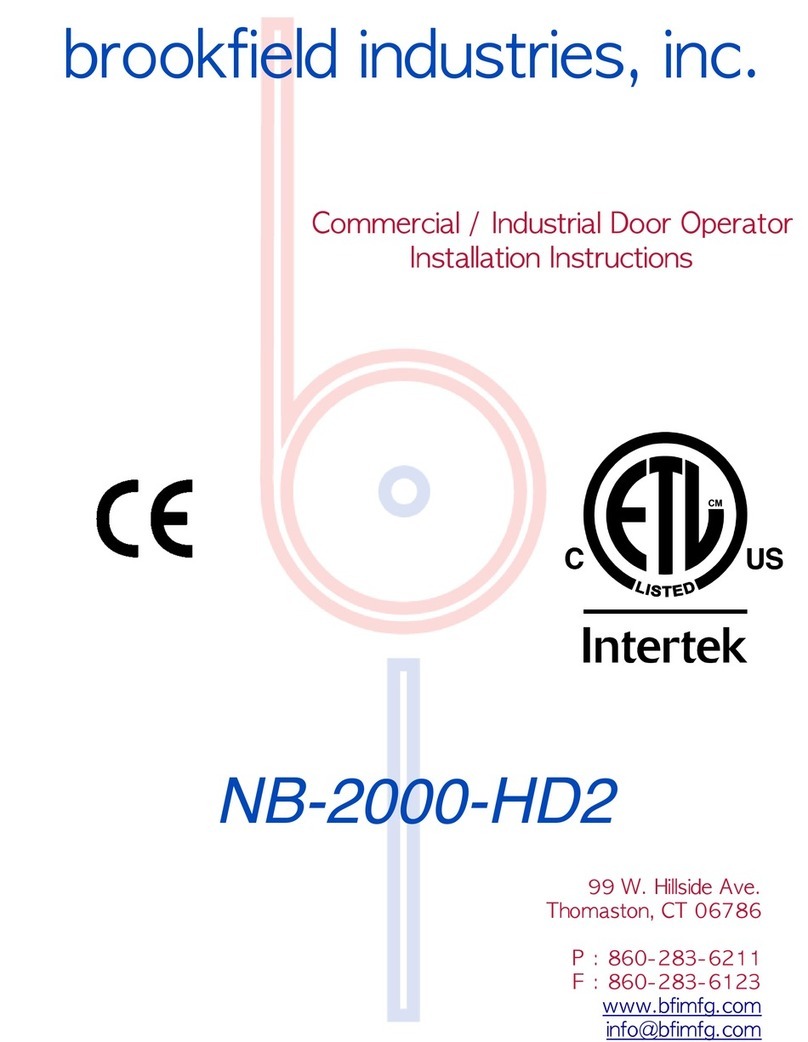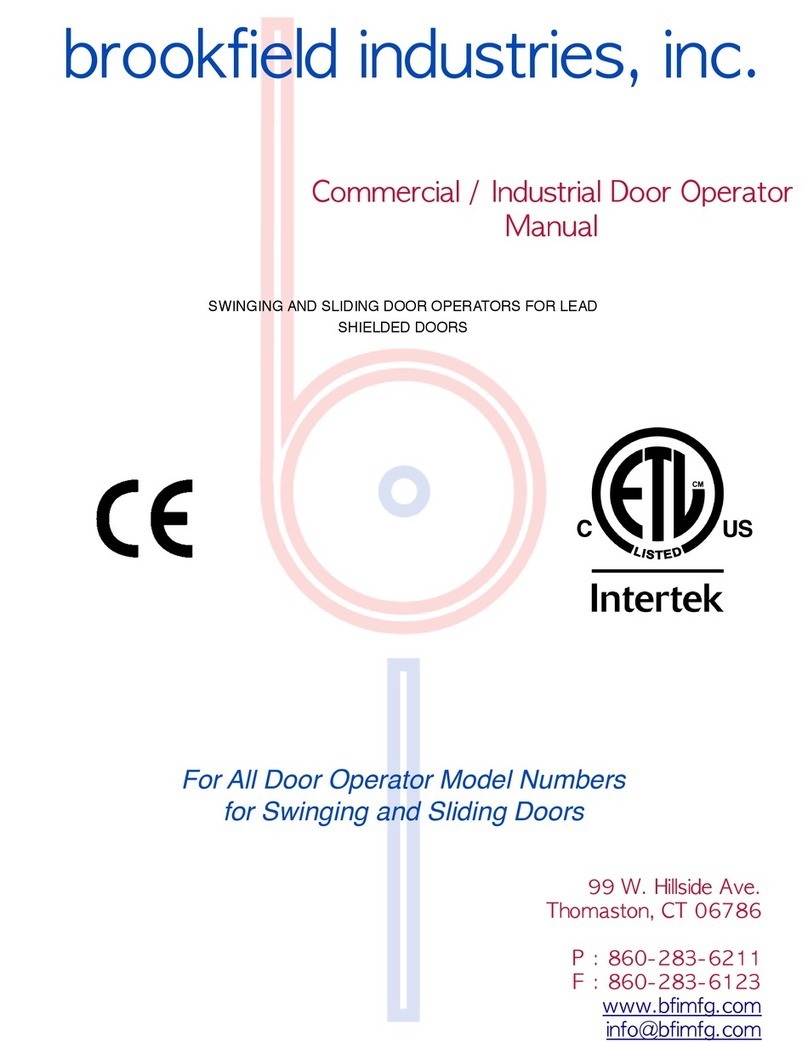
The CPU has been programmed to adjust on the fly, such door position presets as
Back Check, Full Open, Latch Check and Full Closed.
Input commands to be processed by the PLC, are done so by making the appropriate
connections on the Terminal Strip Hookup. By connecting a separate normally open
SPST switch between terminals 1 and 14 to open, terminals 1 and 13 to partially open,
terminals 1 and 12 to close, and a normally closed SPDT switch to terminals 1 and 10 to
stop the door, provides the customer discrete control of each input from a momentary
contact push button station (not included). These commands can also be activated by
presence sensors, or control mats. Reversing the direction of the door while it’s moving
(dynamic) can be accomplished by simply pressing the appropriate switch to change
direction. We do not include any activation devices or push button stations with our
door operators.
The NB-4150 features momentary contact Input commands for External Safety
Devices that comply with Entrapment Protection of UL 325 Section 30.2 (Fail
Safe/Self-Monitoring). These devices are normally door mounted, 4-wire reversing
edge contact type sensors that reverse the door while closing. However, they can be
substituted with non-contact type presence sensors providing the external wiring is
compatible with our internal wiring. Note: The door will not be allowed to close
unless these sensors are correctly wired per this manual. When installing contact
type sensors, assure they are properly secured to the leading edge of the door with sufficient
spacing and length to assure safe activation (refer to the owner’s manual). Momentary
contact Input commands and a low voltage Class (2) power supply are also provided
for additional (redundant) sensors, such as non-contact type presence sensors
that are frame mounted. brookfield industries does not manufacture nor do we include
External Safety Devices with any of our door operators. The installer is solely
responsible for selecting the correct sensors to prevent injury. To assure that external
safety devices are properly installed and adjusted correctly, refer to the owner’s manual
for that devise. For proper wring, refer to Terminal Strip Hookup and the Wiring
Diagram included in this manual.
The NB-4150 also features a maintained contact (constant pressure/dead man)
Input (Terminals 1 & 20) to close the door that complies with UL 325, Entrapment. For
proper wiring to this input, please refer the Terminal Strip Hookup.
The user now has the flexibility of choosing either one of the above methods:
Entrapment by means of maintained contact or External Entrapment Protection through
safety sensors. Both methods can be employed by simply connecting to both inputs.
The maintained contact could then be utilized as an emergency override for closing the
door in case the tape switches fail. This allows the door to stay in operation until the
contact sensors can be repaired.
The Stop command (normally closed terminal #10) will stop the door in any position
when activated but it will not prevent a motor drive from malfunctioning nor is it a true
emergency stop. Emergency Stop (E-Stop) can only be accomplished by
disconnecting AC power to the operator (Terminal L1, L2, L3 and Terminal N).
The NB-4150 features the same Absolute Position Feedback Control system and
software as other brookfield industries, inc. door operators. There are no limit or































